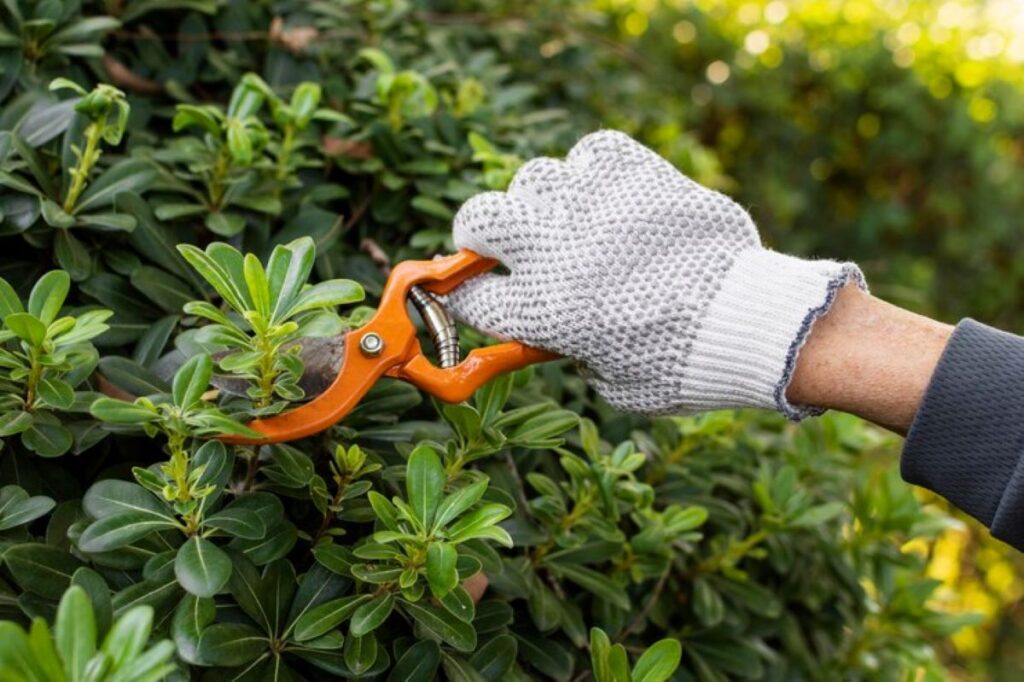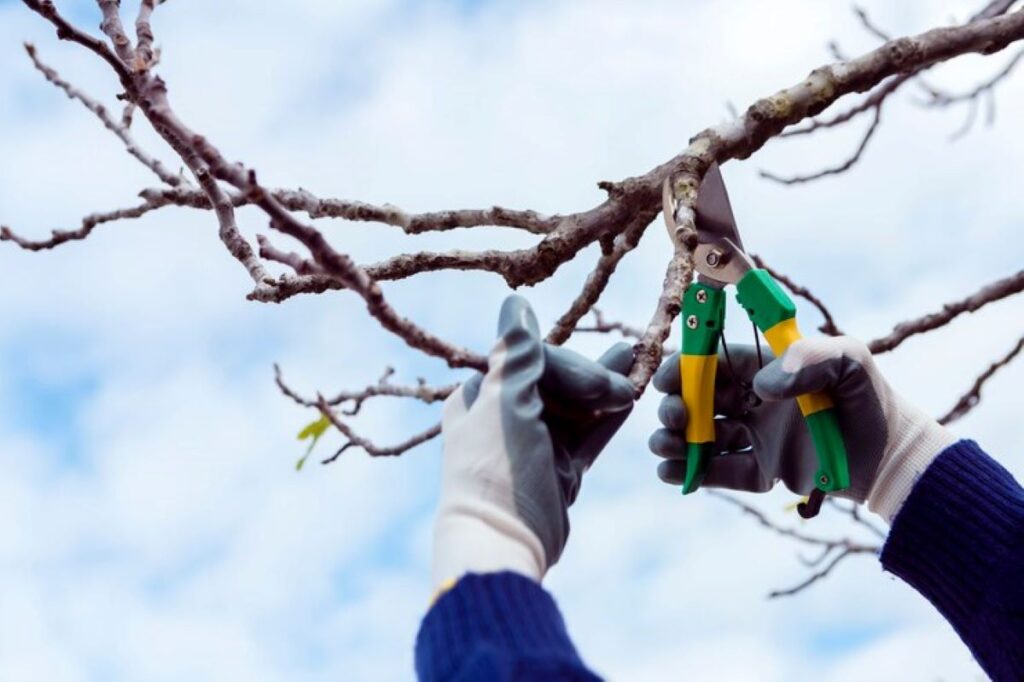Trees are not only beautiful, they also play a vital role in maintaining a healthy environment. They provide shade, improve air quality, and add value to your property. However, in order to ensure that your trees remain healthy and beautiful, regular tree pruning is essential. Tree pruning not only enhances the aesthetic appeal of your trees, but also promotes their overall health and longevity. In this article, we will explore the importance of tree pruning, how to identify when your tree needs pruning, how to choose the right tree pruning service in Sydney, the tree pruning process, and post-pruning care for your trees.
Understanding the Importance of Tree Pruning
Tree pruning is the selective removal of specific parts of a tree, such as branches, buds, or roots. It is a critical aspect of tree care that should not be overlooked. Pruning helps maintain the natural form and shape of the tree, promotes healthier growth, and prevents potential hazards. Additionally, tree pruning enhances air circulation and sunlight penetration, which is vital for the overall health of the tree.
The Science Behind Tree Pruning
Tree pruning is not simply a matter of randomly cutting branches off a tree. It is based on the principles of arboriculture and requires a deep understanding of tree biology. Proper pruning techniques involve strategic cuts to remove dead, diseased, or structurally weak branches, while preserving the tree’s natural structure and future growth.
Benefits of Regular Tree Pruning
- Improved Tree Health: Pruning helps remove dead or diseased branches, preventing the spread of diseases and promoting healthy tree growth.
- Enhanced Aesthetic Appeal: By removing overgrown or unsightly branches, pruning enhances the overall appearance of trees, making them more visually appealing.
- Safety and Hazard Prevention: Pruning eliminates weak or damaged branches that could pose a safety risk, such as falling during storms or high winds.
- Promotes Fruit Production: Fruit trees benefit greatly from pruning, as it improves air circulation and sunlight exposure, leading to better fruit production.
Moreover, tree pruning has ecological benefits as well. When trees are pruned, it allows for the development of a diverse and healthy ecosystem within the tree canopy. By selectively removing branches, the tree creates space for other plants, such as epiphytes, to grow. These plants not only add beauty to the tree, but they also provide habitat for various birds, insects, and other wildlife.
Furthermore, tree pruning can have a positive impact on the surrounding environment. When trees are pruned correctly, it can help reduce the risk of damage during severe weather events. By removing weak or overhanging branches, the tree becomes more resistant to strong winds, reducing the chances of branches breaking and causing property damage.
Identifying When Your Tree Needs Pruning
Knowing when to prune your tree is crucial, as pruning at the wrong time can have negative consequences. Here are some signs that indicate your tree may need pruning:
Signs of Tree Distress
- Dead or Decaying Branches: Dead or decaying branches are not only unsightly, but they can also attract pests and diseases, which can spread to the rest of the tree.
- Overhanging Branches: If tree branches are encroaching on power lines, buildings, or other structures, it is important to have them pruned to prevent potential hazards.
- Crowded Canopy: When the branches in the canopy of a tree become too dense, pruning can help improve air circulation and reduce the risk of diseases.
Furthermore, it is essential to pay attention to signs of tree distress such as stunted growth, yellowing or browning leaves, and early leaf drop. These can be indications of underlying issues that may require pruning to address.
Seasonal Considerations for Tree Pruning
Timing is crucial when it comes to tree pruning. Different trees have different pruning needs, and the timing of pruning can vary depending on the species and the desired outcomes. It is generally recommended to prune deciduous trees during their dormant season, in late winter or early spring, before the new growth starts. However, some trees may require specific timing, so it is best to consult with a professional tree pruning service for guidance.
For fruit-bearing trees, pruning after the harvest season can help promote new growth and improve fruit production for the following year. On the other hand, flowering trees may benefit from pruning immediately after they bloom to encourage healthy growth and abundant blooms in the next flowering season.
Choosing the Right Tree Pruning Service in Sydney
The success of your tree pruning project greatly depends on the expertise and skills of the tree pruning service you choose. Here are some factors to consider when selecting a tree pruning service in Sydney:
Tree pruning is a crucial aspect of maintaining the health and aesthetics of your trees. Proper pruning not only enhances the beauty of your landscape but also promotes the overall well-being of the trees. When looking for a tree pruning service in Sydney, it is essential to prioritize experience and expertise. A company with years of experience in the industry is more likely to deliver quality results and handle any challenges that may arise during the pruning process.
What to Look for in a Tree Pruning Service
- Experience and Expertise: Choose a tree pruning service with a proven track record of successfully pruning trees. Look for certifications and qualifications that demonstrate their knowledge and expertise.
- Insurance and Licensing: Ensure that the tree pruning service is properly licensed and insured. This protects both you and the tree pruning service in case of any accidents or damages during the pruning process.
- References and Reviews: Check for references or read online reviews to get an idea of the quality of service provided by the tree pruning company. Positive feedback and satisfied customers are indicators of a reliable and reputable service provider.
Additionally, when selecting a tree pruning service, consider their approach to sustainability and environmental responsibility. A company that follows environmentally-friendly practices, such as recycling pruning waste or using organic fertilizers, demonstrates a commitment to preserving the ecosystem.

Questions to Ask Your Potential Tree Pruner
Before hiring a tree pruning service, it is important to ask the right questions to ensure they are the right fit for your needs. Consider asking:
- Do you have experience pruning trees similar to mine?
- What pruning techniques do you use?
- Will you provide a written estimate?
- Do you have any references I can contact?
Furthermore, inquire about the equipment and tools the tree pruning service uses. Modern and well-maintained equipment not only ensures efficiency but also reflects a commitment to safety. A reputable tree pruning service will invest in high-quality tools to deliver the best results for your trees.
See Also: How to Find Reliable Tree Pruning Services Near Me
The Tree Pruning Process Explained
Initial Assessment and Planning
The first step in the tree pruning process is an initial assessment and planning. An experienced arborist will evaluate the tree’s health, structure, and pruning needs. They will identify any potential hazards or constraints that may affect the pruning process and develop a customized pruning plan accordingly.
During the initial assessment, the arborist will also consider the tree’s species and growth habits. Different tree species may require specific pruning techniques to promote healthy growth and prevent disease. Factors such as the tree’s age, location, and surrounding environment will also be taken into account to ensure that the pruning plan is tailored to the tree’s individual needs.
The Pruning Procedure
Once the assessment and planning phase is complete, the actual pruning procedure begins. Depending on the tree’s condition and the desired outcomes, different pruning techniques may be employed, such as crown thinning, crown raising, or crown reduction. It is important to use proper pruning tools and techniques to ensure the health and longevity of the tree.
Crown thinning involves selectively removing branches to increase light penetration and air circulation within the tree’s canopy. This technique can help reduce the risk of disease and improve the tree’s overall structure. Crown raising, on the other hand, focuses on removing lower branches to provide clearance for buildings, vehicles, or pedestrians. Crown reduction is used to decrease the overall size of the tree while maintaining its natural shape and structural integrity.
Post-Pruning Care for Your Trees
After pruning, it is important to provide proper care to your trees to ensure their continued health and beauty. Here are some post-pruning care tips:
Maintaining Tree Health After Pruning
- Watering: Adequate irrigation is important after pruning to help the tree recover from the pruning stress. Water the tree deeply and regularly, especially during dry periods.
- Mulching: Apply a layer of organic mulch around the base of the tree to conserve moisture, regulate soil temperature, and suppress weed growth.
- Fertilization: If necessary, provide the tree with a balanced fertilizer to promote healthy growth and recovery.
Proper post-pruning care plays a crucial role in the overall health and well-being of your trees. In addition to the essential steps mentioned above, it is also beneficial to inspect the pruned areas for any signs of decay or disease. Keeping an eye on these areas can help you catch any issues early on and take necessary action to prevent further damage.
Enhancing Tree Resilience and Growth
Aside from basic post-pruning care, promoting resilience and growth in your trees can be achieved through additional practices. Consider implementing a regular pruning schedule to maintain the tree’s shape and structure, which can improve its overall health and longevity. Furthermore, conducting a soil analysis can provide valuable insights into the nutrient levels and pH balance of the soil, allowing you to tailor your fertilization approach for optimal tree growth.

Preventing Future Tree Damage
Regular monitoring and maintenance are key to preventing future tree damage. Inspect your trees regularly for signs of disease, pests, or structural issues. If you notice any problems, consult a professional tree care service for guidance on appropriate treatment or further pruning.
By understanding the importance of tree pruning, knowing when and how to prune your trees, and choosing the right tree pruning service, you can keep your trees healthy and beautiful for years to come. Remember to provide post-pruning care to ensure the ongoing health and vitality of your trees. Happy pruning!
